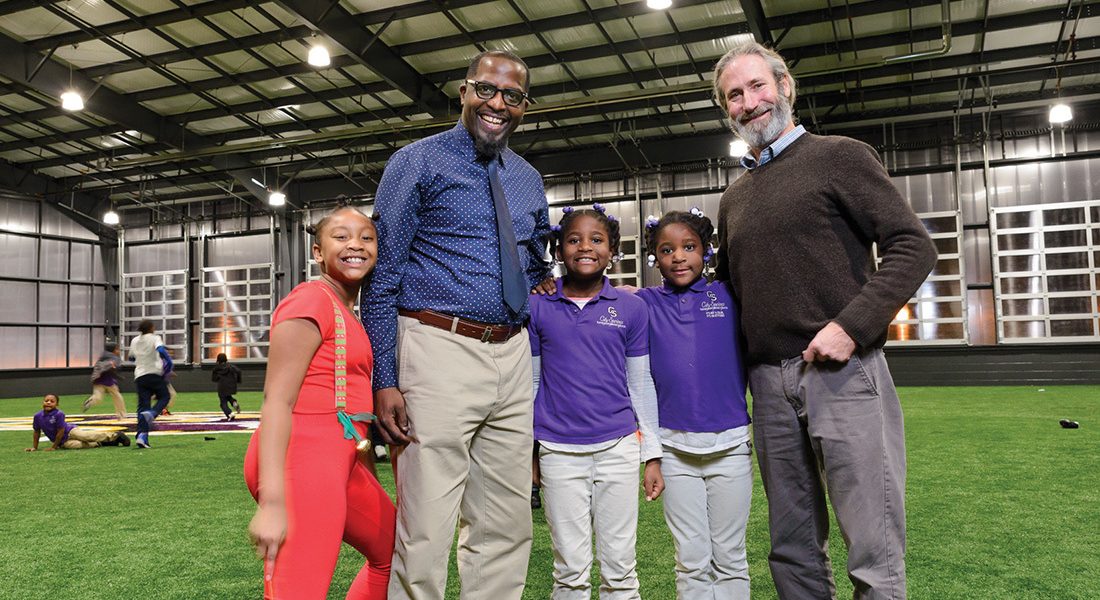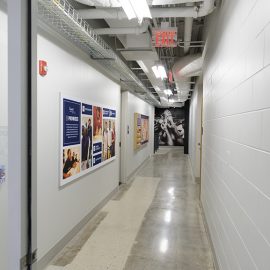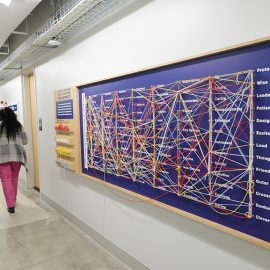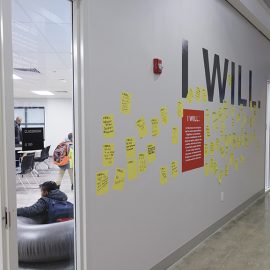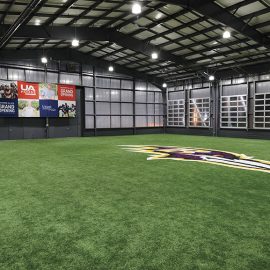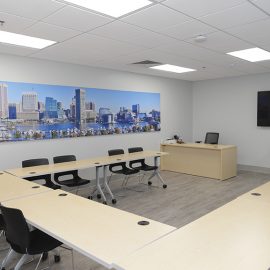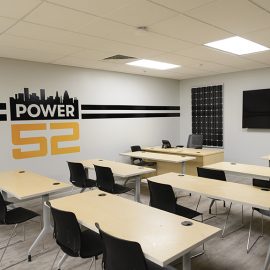News & Community
A Place Like Home
A new community center opens in East Baltimore.
Growing up in the public housing development Perkins Homes, Travis Street saw firsthand the importance of community centers in Baltimore City. “Once ours closed, I started to notice a lot of my peers getting into trouble, using drugs, selling drugs, going to jail,” he says. “And our communities were divided.”
As their numbers have dwindled from 150 in 1990 to a mere 42 today, the lack of community centers in Baltimore’s underserved neighborhoods has become a critical component in conversations about the city, an issue underscored by the 2015 uprising after the death of Freddie Gray.
But beside the heavy traffic of Fayette Street stands a bright blue beacon of hope for East Baltimore and the city as a whole. Here, Street now serves as the director of UA House at Fayette, a newly renovated, 30,000-square-foot, state-of-the-art community center—operated by Living Classrooms—which opened in November with a generous donation from Under Armour’s Kevin Plank. The cobalt-colored entrance beckons you inside where, to the left, a recording studio offers guitars, drums, and keyboards for making music and, to the right, a covered field house features a turf field and sky-high garage doors. There’s also a yoga and dance studio, a full-purpose neighborhood kitchen, and a regulation-size basketball court.
Just a few steps from where Street grew up (and near other low-income housing like Pleasant View Gardens and Douglas Homes), the 37-year-old now finds himself working to help transform the lives of those same kids he grew up with, not to mention their own children, and even grandchildren. “We’re taking a multigenerational approach,” he says. “The whole goal is to strengthen the communities and bring people together.”
As the anchor of Living Classrooms’ Target Investment Zone initiative, which aims to disrupt the cycle of poverty in 2.5 square miles of underserved communities from the JFX to Patterson Park, the UA House offers more than just fun and games. “This is the heartbeat of the community,” says James Piper Bond, president and CEO of Living Classrooms. “The programming that’s happening here is rippling out across the city.”
The space offers year-round after-school programming for elementary through high school students, and features a STEM classroom with white boards and Mac computers. The building’s lower level houses an impressive workforce development and entrepreneurship center with job and skill training for adults. “It’s about overcoming and eliminating barriers, looking at the long term, and making sure people succeed,” says Street. “When we say we are community-driven, we are. We know every household. This is my family.”
